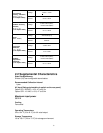
9
1.2 Output Checkout
The following procedures check to ensure that the power supply develops its rated outputs and properly
responds to operation from the front panel.
1.2.1 Voltage Output Checkout
The following steps verify basic voltage functions without load.
1. Turn on the power supply.
2. Enable the outputs.
Press key to let the ON annunciator and the CV annunciator turn on to light.
Notice: if the voltage value flash, then the power supply is in Set mode, ‘‘Set mode’’ means that the VFD
display shows the setting output voltage and current. Or the power supply is in Meter mode, ‘Meter
mode” means that the VFD display shows the actual output voltage and current.
3. Check that the front-panel voltmeter properly responds to number keys
Set some different voltage values, then wait till the Meter mode to check if the VFD displayed voltage
value is the same as the set voltage value, and to check if the VFD displayed current value is nearly
zero.
4. Ensure that the voltage can be adjusted from zero to the full rated value.
1.2.2 Current Output Checkout
The following steps check basic current functions with a short across the power supply’s output.
1. Turn on the power supply.
2. Disable the output
Press key to ensure that the output is disabled. The ON annunciator is turned off.
3. Connect a short across (+) and (-) output terminals with an insulated test lead.
Use a wire size sufficient to handle the maximum current.
4. Enable the output.
Press key to ensure that the output is enabled. The ON annunciator is turned on.
5. Adjust the voltage value to 1.0 volt.
Adjust the voltage to 1.0 volt to ensure the power supply is in CC operation mode. The CC annunciator
will turn on.
6. Adjust the current value.
Set some different voltage values, then wait till the Meter mode to check if the VFD displayed current
value is the same as the set voltage value, and to check if the VFD displayed voltage value is nearly
Warning: To satisfy safety requirements, load wires must be heavy enough not to
overheat when carrying the maximum short-circuit output current of the power
supply. If there is more than one load, then any pair of load wires must be capable of
safety carrying the full-rated current of the power supply.
Out
on/of
f
Out
on/of
f
Out
on/of
f


















